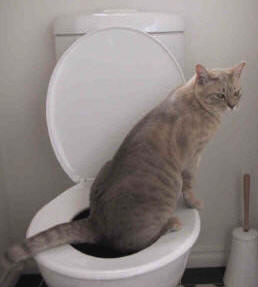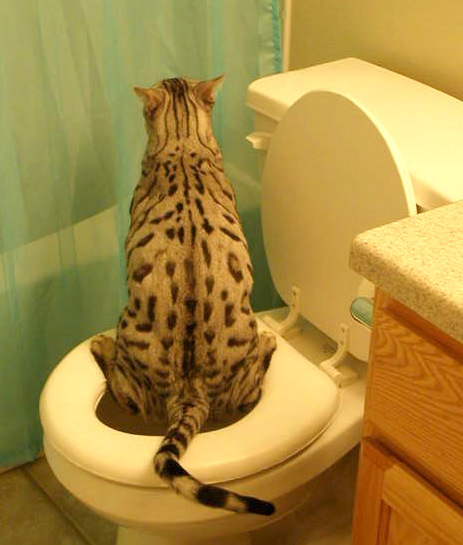Reasons Flushing Cat Poop Down Your Toilet Is Harmful - Tips for Correct Disposal
Reasons Flushing Cat Poop Down Your Toilet Is Harmful - Tips for Correct Disposal
Blog Article
This post following next pertaining to Can You Flush Cat Poo or Litter Down the Toilet? is seriously enjoyable. Don't bypass it.

Introduction
As cat owners, it's vital to be mindful of how we dispose of our feline pals' waste. While it may seem convenient to flush cat poop down the bathroom, this technique can have destructive effects for both the environment and human health and wellness.
Ecological Impact
Flushing feline poop introduces damaging virus and bloodsuckers right into the water, posing a significant danger to aquatic ecosystems. These contaminants can negatively influence aquatic life and concession water high quality.
Wellness Risks
In addition to environmental problems, flushing feline waste can likewise present health risks to people. Pet cat feces may consist of Toxoplasma gondii, a bloodsucker that can cause toxoplasmosis-- a potentially serious ailment, particularly for expecting females and people with damaged body immune systems.
Alternatives to Flushing
The good news is, there are more secure and extra liable means to dispose of cat poop. Take into consideration the following choices:
1. Scoop and Dispose in Trash
One of the most usual method of dealing with pet cat poop is to scoop it right into a naturally degradable bag and throw it in the garbage. Make sure to use a dedicated clutter scoop and dispose of the waste immediately.
2. Use Biodegradable Litter
Select biodegradable pet cat trash made from materials such as corn or wheat. These clutters are eco-friendly and can be safely dealt with in the garbage.
3. Bury in the Yard
If you have a backyard, think about burying cat waste in an assigned location far from vegetable yards and water resources. Be sure to dig deep sufficient to stop contamination of groundwater.
4. Install a Pet Waste Disposal System
Purchase a pet dog waste disposal system specifically designed for feline waste. These systems make use of enzymes to break down the waste, lowering odor and environmental impact.
Conclusion
Accountable pet dog possession expands past supplying food and sanctuary-- it likewise entails correct waste monitoring. By refraining from purging pet cat poop down the toilet and selecting alternate disposal methods, we can decrease our environmental impact and secure human health.
Why Can’t I Flush Cat Poop?
It Spreads a Parasite
Cats are frequently infected with a parasite called toxoplasma gondii. The parasite causes an infection called toxoplasmosis. It is usually harmless to cats. The parasite only uses cat poop as a host for its eggs. Otherwise, the cat’s immune system usually keeps the infection at low enough levels to maintain its own health. But it does not stop the develop of eggs. These eggs are tiny and surprisingly tough. They may survive for a year before they begin to grow. But that’s the problem.
Our wastewater system is not designed to deal with toxoplasmosis eggs. Instead, most eggs will flush from your toilet into sewers and wastewater management plants. After the sewage is treated for many other harmful things in it, it is typically released into local rivers, lakes, or oceans. Here, the toxoplasmosis eggs can find new hosts, including starfish, crabs, otters, and many other wildlife. For many, this is a significant risk to their health. Toxoplasmosis can also end up infecting water sources that are important for agriculture, which means our deer, pigs, and sheep can get infected too.
Is There Risk to Humans?
There can be a risk to human life from flushing cat poop down the toilet. If you do so, the parasites from your cat’s poop can end up in shellfish, game animals, or livestock. If this meat is then served raw or undercooked, the people who eat it can get sick.
In fact, according to the CDC, 40 million people in the United States are infected with toxoplasma gondii. They get it from exposure to infected seafood, or from some kind of cat poop contamination, like drinking from a stream that is contaminated or touching anything that has come into contact with cat poop. That includes just cleaning a cat litter box.
Most people who get infected with these parasites will not develop any symptoms. However, for pregnant women or for those with compromised immune systems, the parasite can cause severe health problems.
How to Handle Cat Poop
The best way to handle cat poop is actually to clean the box more often. The eggs that the parasite sheds will not become active until one to five days after the cat poops. That means that if you clean daily, you’re much less likely to come into direct contact with infectious eggs.
That said, always dispose of cat poop in the garbage and not down the toilet. Wash your hands before and after you clean the litter box, and bring the bag of poop right outside to your garbage bins.
https://trenchlesssolutionsusa.com/why-cant-i-flush-cat-poop/

Do you enjoy reading up on How to Dispose of Cat Poop and Litter Without Plastic Bags? Try leaving feedback further down. We will be delighted to find out your responses about this article. In hopes that you come back again later on. Enjoyed our article? Please share it. Help somebody else find it. We thank you for reading our article about Can You Flush Cat Poo or Litter Down the Toilet?.
Request A Quote Report this page